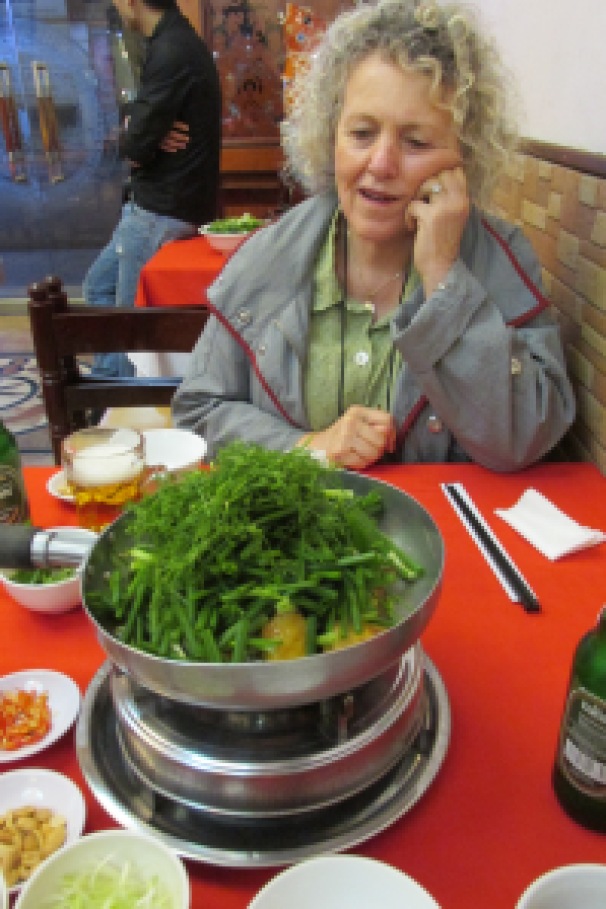
In preparing for this trip to Vietnam I read that Vietnam is one of the top ten food destinations in the world. Further, I read that Hanoi is in the top eight. Now, I am not sure who makes these determinations and how accurate they are, but based on my limited experience they may not be accurate. Perhaps Vietnam should be in the top five along with India, Hong Kong, Lyon, and San Francisco. I have hesitated to write about the food because there is so much to say that I hardly know where to begin.
One of the impressive things about the food is its freshness. It could be said that the Vietnamese have a fetish for fresh food. Mrs. Huong who is the office manager of the department in which my partner is teaching tells me that she goes to her farmer’s market every morning at 6:AM as it is important to have fresh ingredients for the evening meal. She returns home, prepares breakfast, drops her daughter off at school and motor scooters her way to work. I am also told that some women go to the market twice a day. A lack of refrigeration has set up a national need for fresh food. And by the way, I have not seen a supermarket since I’ve been here. All meat, fowl, fish, produce, spices, herbs and bread products are purchased at the farmer’s market. Small shops and bakeries fill the other needs. I find all of this rather remarkable considering that Hanoi has a population of six to eight million. When I tour a market in another country, I come away wishing I had a local kitchen available.
Recognize the greens?
Sugarcane
Snails
Silkworms: toss dry in skillet and add salt.
The Butchers
Market vendors taking a break.
The food in the eating establishments is just as fresh. I have taken two tours of Hanoi’s famous street food stalls. One, a morning and the other an evening tour, were remarkable! I would put the food I have eaten on the Street up against any Michelin recommended restaurant. Food is cooked over a grill or in a wok-like pan both over specially designed charcoal units. Eating in a street food stall is a little like having omakasei in Japan except the street site is not so tidy and depending on the size of the stall the patron sits at the same table as the chef on one of those infamous foot high, blue or red plastic stools. Knee issues are no problema as stools can be stacked to add height—at least to one and a half feet tall!
Stacked blue stools!
Some stall are equipped with hi-end wooden benches!
Chef at rest.
Vietnam’s coffee and beer are among the best. Arabica and mocha are produced in the central highlands. The region is second only to Brazil in terms of coffee bean production. The mocha as to be expected is quite chocolaty and rich with full-bodied complexity and a rounded finish. When I return home I must find out if Portola Coffee carries it. At one coffee house and there must be a hundred – no Starbucks in Hanoi -the proprietor urged me to take some beans home with me. As fresh roasted beans last at their best for two weeks, and I would be in Vietnam two more weeks, I declined.
Twice we have eaten at famous Cha Ca Thang Long that happens to be a short walk from our hotel. We ordered the same dish for both meals: a local fish, rice noodles fresh herbs, shredded cabbage, ginger, peanuts, and dipping sauces cooked in a skillet over a portable gas burner at the table. Finally, topped with a generous portion of dill, ginger and cilantro and tossed all together in a bowl, we ate our meal with chopsticks, and washed it down with a Hanoi bia. Yum!
A serious foodie
A few days back I was asked to teach English to some of the lecturers and grad students at the University of Mining and Geology. They are preparing for an international English test. Their concern is the writing part in which they have to describe trends and argue their case. I had a great time interacting as the English professor, but Mrs. Huong’s lunch prepared in her office as a cooking lesson was the piece de resistance. She brought her electric hot plate on which to cook small black beans. Three kinds of rice had been prepared ahead at home: a sticky rice to mix with the beans, a steamed rice to mix with fish and tofu, and a very special seasonal rice to eat with banana for dessert. The latter harvested while the rice is immature was roasted to a soft, chewy texture. A peeled banana was offered to dip into the rice…sort of like dipping a banana in granola to catch up some flakes and grains.
A rice dish had preceded the three dishes of rice at lunch at my hotel breakfast. Called banh cuon, it is rice that has been fermented, and then poured on a cloth stretched over a big-bellied pot of boiling water and steamed to form sheets. When done the sheets are scattered with mushrooms, or bits of beef or chicken, rolled and sprinkled with crispy shallots. Chef Jack uses mushrooms. This is one dish that I must learn how to make on return to the US.
Rice for breakfast, lunch, and several dishes in the street food tour that evening surely illustrated the ubiquitousness of rice in Vietnam. And, I felt like I had had another Anthony Bourdain day.

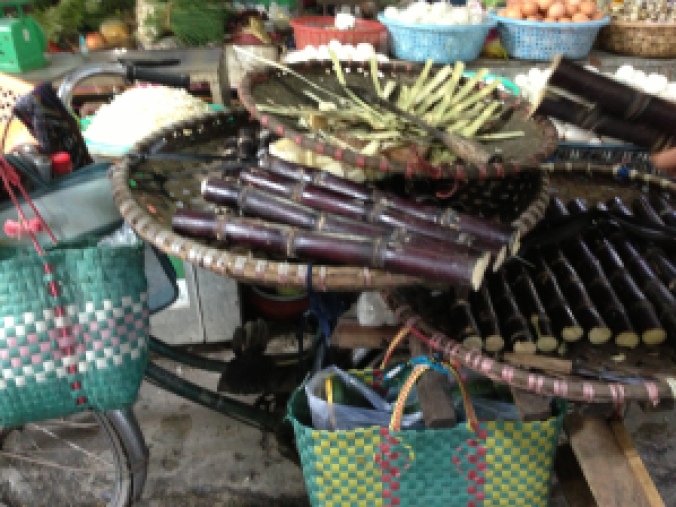
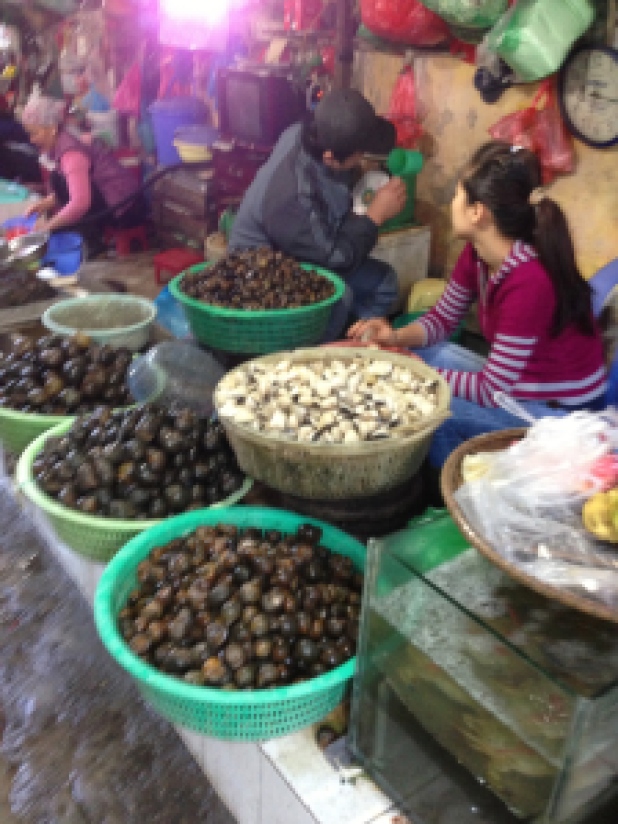
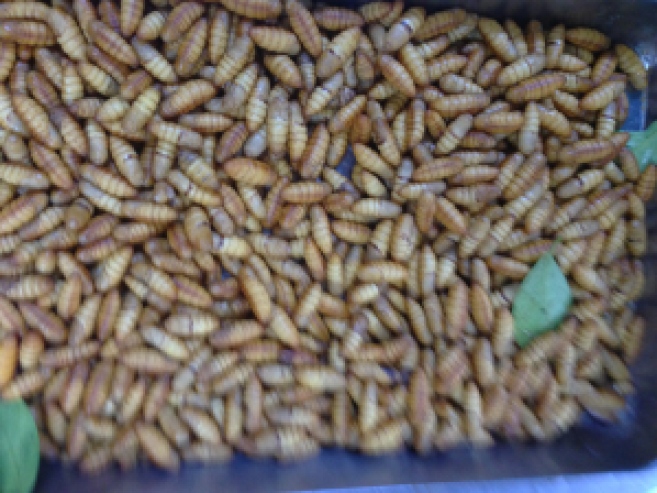
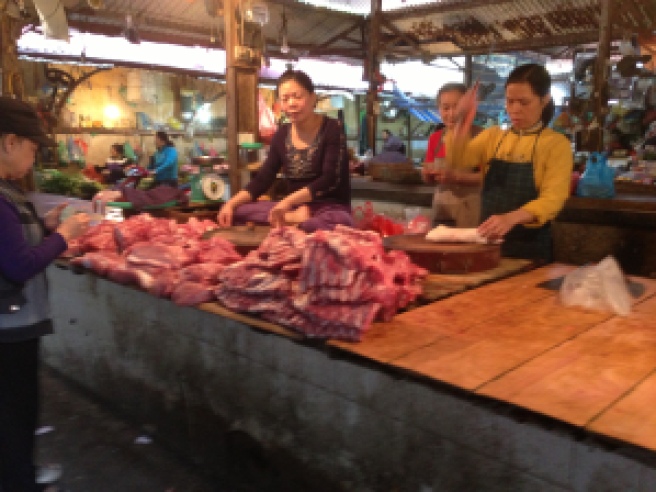

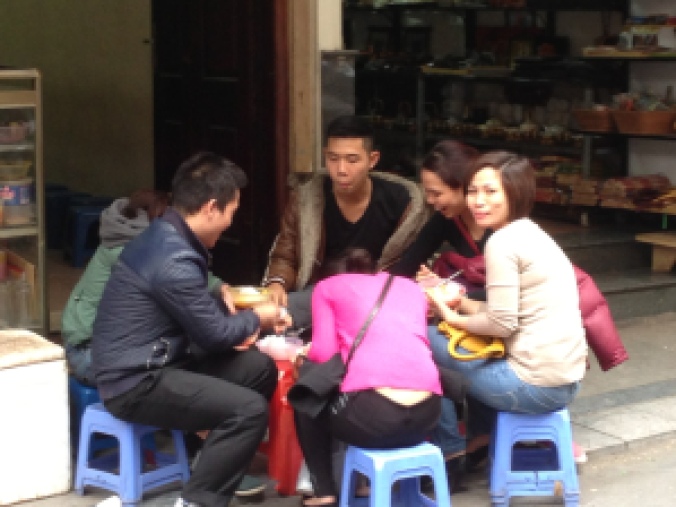
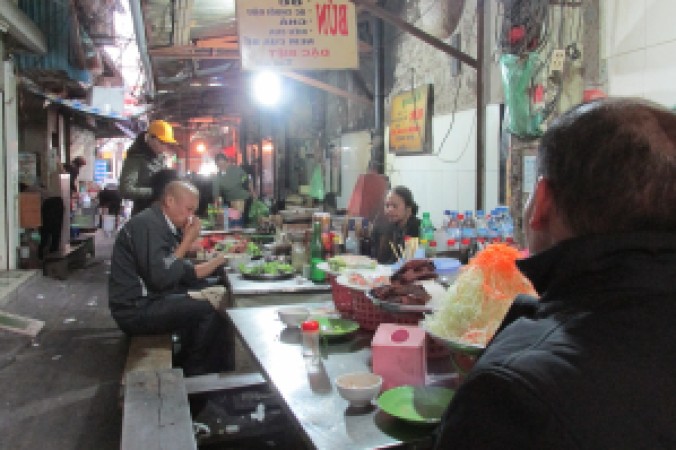
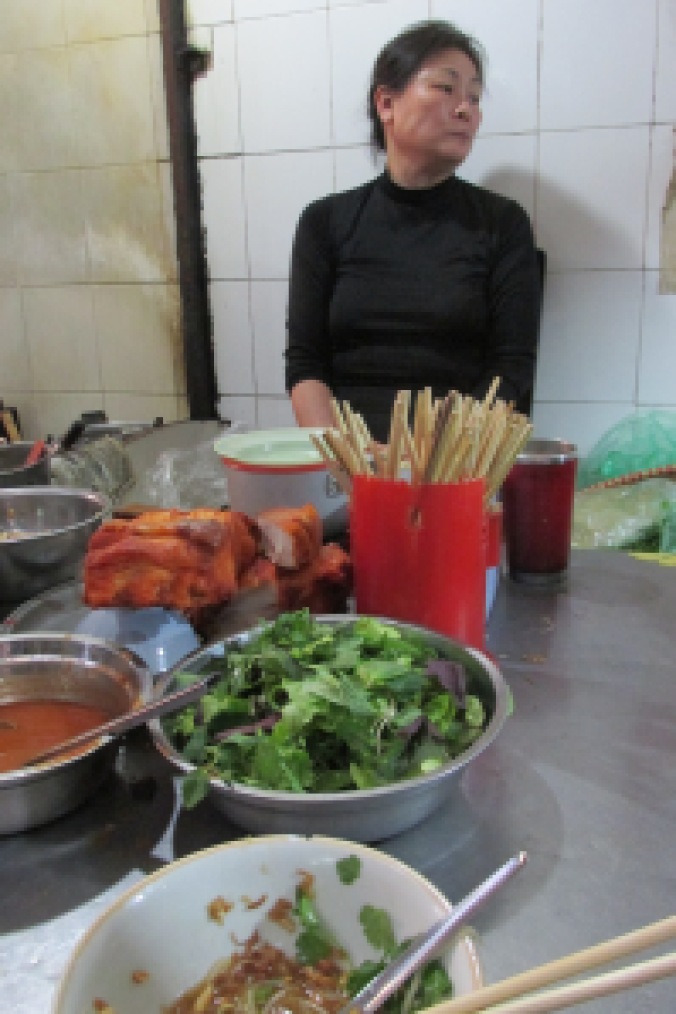
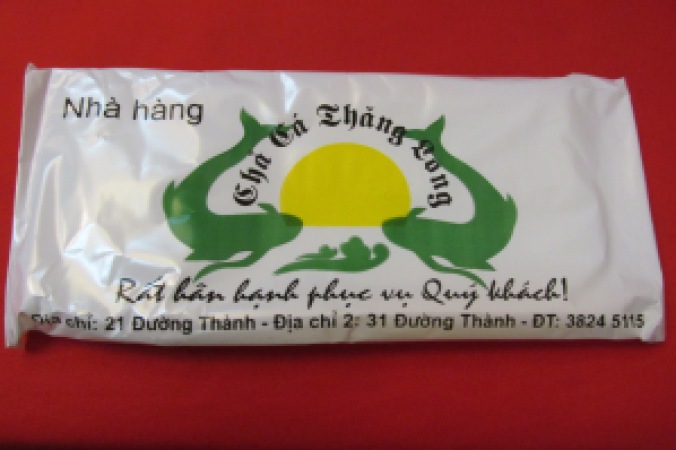

December 10, 2013 at 3:23 am
I just LOVE reading of your experiences, Penelope!!!! I’ll never get there but your descriptions make me feel as though I’ve had a close-up encounter !!!! Love, Maureen Jenkins
December 10, 2013 at 3:37 am
Thanks, so much.
December 11, 2013 at 3:59 am
Thank you penelope I have enjoyed your travels very much. I love the pictures, that brings the whole trip much closer to the heart.
Richard
December 11, 2013 at 5:46 am
Thank you, Richard.